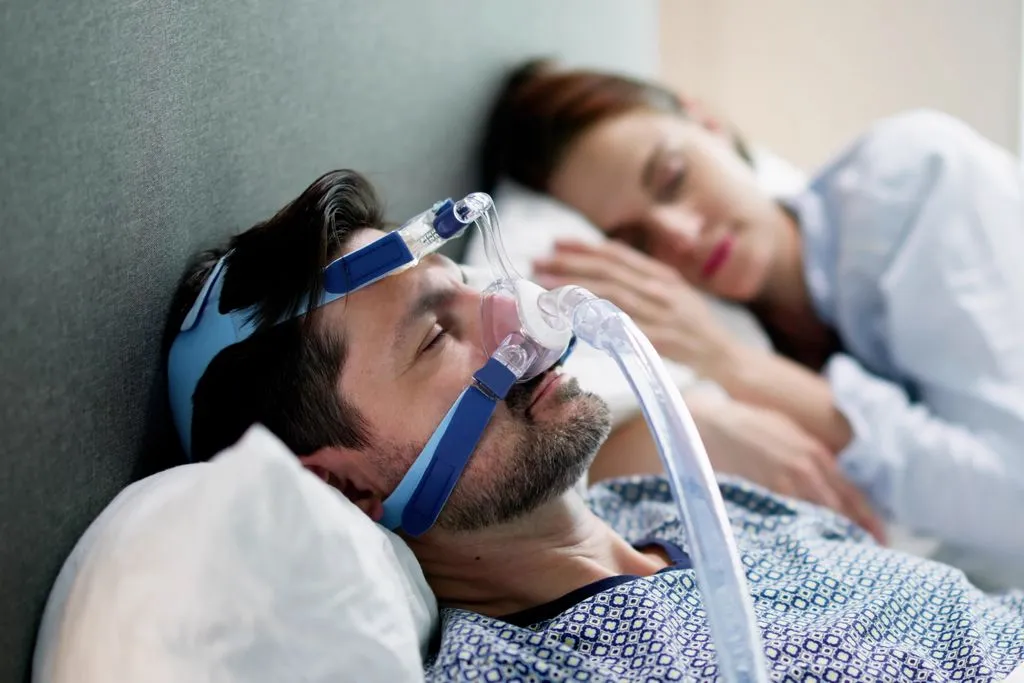Understanding Nasal Obstruction and Its Impact on CPAP Therapy
Nasal obstruction refers to the partial or complete blockage of the nasal airway, causing difficulties with breathing. Individuals with nasal allergies, sinus problems, a deviated septum, or nasal polyps often suffer from moderate to severe nasal obstruction. When a person wears a CPAP mask, it is essential to have unobstructed airflow through the nostrils to optimize treatment effectiveness and comfort. If the nasal airway is partially or entirely blocked, CPAP pressure may feel suffocating due to increased resistance or excessive pressure buildup.
The Link Between Nasal Obstruction and CPAP Therapy Failure
Nasal obstruction can significantly hinder CPAP therapy success. When the nasal airway is compromised, it can impact the proper functioning of the CPAP system. Some common complaints associated with nasal obstruction during CPAP use include:
1. Mask Leakage
When nasal congestion or obstruction affects the secure fit of the CPAP mask, it can cause improper sealing and air leakage. This reduces the therapy’s effectiveness and leads to discomfort and a perceived sense of suffocation.
2. Ineffective Pressures
Nasal obstruction can limit the ingress of airflow from the CPAP machine, causing increased pressure requirements to maintain an adequate airway. These higher pressures may exacerbate discomfort and make breathing against the elevated resistance feel restrictive.
3. Difficulty Exhaling
Nasal congestion can make exhaling against positive airway pressure more challenging for some individuals. This sensation can contribute to feelings of suffocation, triggering additional discomfort and undermining the benefits of therapy.
4. Ineffective Treatment
Sometimes people with long-standing nasal obstruction are unaware that they are having difficulty breathing. The only indication that there is a problem is when they try CPAP and it fails to treat the sleep apnea adequately. Sleep partners can often hear patients snoring through the mask. Individuals with nasal obstruction may wake up feeling tired despite wearing the mask all night.
Why Does a Full-Face Mask Make Patients Feel Claustrophobic?
Many patients feel claustrophobic when using a full-face mask because it covers both the nose and mouth, creating a sense of enclosure that can be overwhelming. The headgear and chin strap needed to secure the mask add to this sensation by restricting movement and adding bulk around the face. Despite having exhalation ports, larger masks sometimes create a feeling of carbon dioxide buildup inside the mask, which some users find uncomfortable or suffocating. In contrast, alternatives like nasal pillows or a nasal mask fit only over the nose, allowing for a lighter, less intrusive experience with pressurized air, which can help reduce feelings of claustrophobia.
How Can We Treat Nasal Obstruction and Improve the CPAP Experience
Nasal Saline Sprays or Rinses
Using nasal saline sprays or rinses can help clear mucus and reduce inflammation, making it easier to breathe through your nose and fall asleep with less difficulty. These gentle solutions help keep the nasal passages moist and free of irritants, which can significantly improve comfort during CPAP therapy.
Nasal Corticosteroid Sprays
Nasal corticosteroid sprays reduce swelling inside the nasal passages, which can relieve congestion and the suffocating feeling that many patients experience with CPAP. By decreasing inflammation, these sprays help create a clearer airway, making pressurized air from the CPAP machine easier to tolerate.
Oral or Nasal Antihistamines
Oral or nasal antihistamines are effective for managing allergy-related nasal obstruction by reducing histamine reactions that cause swelling and congestion. These medications can improve nasal airflow, helping CPAP users breathe more easily throughout the night.
Decongestants
Decongestants help open nasal airways, reducing the need for mouth breathing during CPAP use. By keeping the airways open, decongestants allow the machine’s air pressure to flow more smoothly, improving comfort and therapy effectiveness. However, they should be used cautiously and for short periods to avoid rebound congestion.
Allergy Treatments
Allergy treatments, including immunotherapy and avoidance strategies, target the root causes of nasal inflammation and congestion. By controlling allergic reactions, these treatments promote restful sleep and enhance CPAP tolerance by maintaining clearer nasal passages.
Humidification With a CPAP Machine
Humidification is essential for many CPAP users to adjust pressure settings comfortably. By controlling the humidity level, humidifiers prevent rainout (condensation inside the mask) and add moisture to the air, reducing dryness and irritation in the nasal passages during therapy.
Septoplasty
For patients with a deviated septum, septoplasty often provides the best solution to nasal obstruction interfering with CPAP therapy. This surgery can improve comfort with nasal pillow masks and overall CPAP effectiveness by correcting structural blockages.
Turbinate Reduction
Turbinate reduction surgery reduces the size of enlarged turbinates inside the nose, which can obstruct airflow. This procedure can make a big difference in improving nasal breathing, allowing CPAP users to tolerate therapy for longer periods without discomfort.
Polypectomy
Polypectomy involves removing nasal polyps that block airflow, leading to significant improvements for CPAP users. Clearing these obstructions can make a big difference in therapy comfort and adherence, enabling patients to use their CPAP machines longer.
Endoscopic Sinus Surgery
Endoscopic sinus surgery is a minimally invasive procedure specifically designed to open blocked sinus pathways and improve oxygen flow. By restoring normal nasal function, this surgery can enhance CPAP tolerance and overall breathing during sleep.
Ikawa et al. Sleep Study: Investigating the Impact of Septoplasty on CPAP Outcomes
Ikawa et al. examined the effects of septoplasty (a surgical procedure to correct a deviated septum) on CPAP treatment effectiveness in patients with nasal obstruction. The study involved 43 participants with CPAP failure due to nasal pathology. After the patients received septoplasty, the researchers analyzed CPAP compliance, improvement in sleep quality, and reduction in symptoms.
The findings of the study revealed the following:
a) Improved CPAP Mask Compliance
Following septoplasty, CPAP compliance significantly improved, with patients reporting increased comfort and decreased mask leakage. Forty of the 43 participants undergoing septoplasty were able to wear their masks properly after surgical correction. The other three were cured of their sleep apnea after surgical correction of their nasal airway.
b) Enhanced Sleep Quality
Participants reported a reduction in sleep disruptions, fewer awakenings, and improved overall sleep quality after the procedure.
c) Symptom Reduction
Symptoms commonly associated with nasal obstruction, such as snoring, daytime sleepiness, and fatigue, were significantly alleviated post-septoplasty.
These findings highlight the importance of addressing nasal obstruction in patients experiencing CPAP failure. By improving nasal airflow, septoplasty can lead to enhanced CPAP tolerance, better therapy adherence, and improved sleep outcomes.
Conclusion
Uncomfortable sensations and a perceived suffocating experience during CPAP therapy can stem from various factors. Nasal obstruction plays a significant role in CPAP failure, leading to discomfort and compromised treatment effectiveness. Addressing nasal obstruction through interventions such as septoplasty can greatly improve CPAP compliance, reduce symptoms, and enhance overall sleep quality.
If you find that your CPAP feels suffocating, it is crucial to consult with an ENT (ear, nose, and throat) specialist. Our professionals can perform a thorough evaluation, including assessing nasal patency, and develop a targeted treatment plan tailored to your specific needs. By addressing nasal obstruction, you can optimize the benefits of CPAP therapy and experience more comfortable and effective sleep apnea management.





